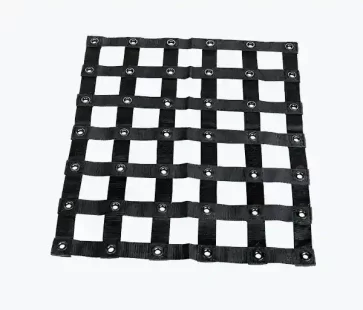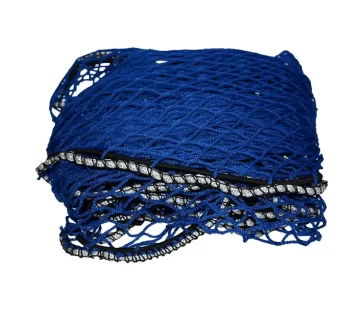Cargo Nets: The Ultimate Guide to Secure Transportation
Introduction to Cargo Nets
Cargo nets play a vital role in ensuring the safety and efficiency of transporting goods. They are available in various types, catering to diverse needs across the transportation sector.
Elastic vs. Non-Elastic Cargo Nets
When it comes to securing cargo, the choice between elastic and non-elastic cargo nets plays a crucial role in transportation safety and efficiency. This section delves into the characteristics, advantages, and considerations of both types to help you select the most suitable option for your specific needs.
Elastic Cargo Nets
Elastic cargo nets are known for their flexibility and adaptability, making them an excellent choice for securing irregularly shaped items or loads that may shift during transit. These nets are typically made from materials with high elasticity, such as rubber or elasticized synthetic fibers, allowing them to stretch over cargo and snugly secure it in place.
Advantages of Elastic Cargo Nets:
Flexibility: Their ability to stretch accommodates various shapes and sizes of cargo, providing a snug fit and preventing movement.
Ease of Use: Elastic nets can be quickly and easily applied or removed, saving time during loading and unloading.
Versatility: They are suitable for a wide range of applications, from small personal vehicles to larger commercial transport.
Considerations for Elastic Cargo Nets:
Load Type: Best for lighter, less bulky items that benefit from the give-and-take of elastic support.
Durability: While highly flexible, they may not withstand the rigors associated with very heavy or sharp-edged cargo.
Non-Elastic Cargo Nets
Non-elastic cargo nets, on the other hand, are designed to offer stability and strength for heavier loads. Made from materials like nylon, polyester, or polypropylene, these nets lack the stretchability of their elastic counterparts but provide superior resistance and security for bulky, heavy cargo.
Advantages of Non-Elastic Cargo Nets:
Strength: They can securely hold heavier loads in place, making them ideal for industrial and commercial use.
Durability: Constructed from tough, wear-resistant materials, non-elastic nets are more suited to heavy-duty applications and harsh conditions.
Security: Provides a stable, immovable barrier against cargo movement, essential for long-distance transportation and rough terrains.
Considerations for Non-Elastic Cargo Nets:
Flexibility: Without the ability to stretch, these nets might not accommodate irregular loads as effectively as elastic nets.
Application: Requires careful selection to match the net’s size and mesh dimensions with the cargo’s specific dimensions and weight.
Choosing Between Elastic and Non-Elastic Cargo Nets:
The choice between elastic and non-elastic cargo nets ultimately depends on the nature of the cargo, the transportation conditions, and specific security needs. For lighter, more irregular loads that might benefit from some movement, an elastic cargo net is preferable. It provides the necessary give to accommodate and secure the cargo effectively. In contrast, for heavier, more uniform loads that require rigid security against movement, a non-elastic cargo net is the better option. Its strength and durability ensure that the cargo remains immovable, regardless of the transportation conditions.
In summary, when selecting a cargo net, consider the type of cargo you’re securing, the conditions under which it will be transported, and the level of security and flexibility you require. Whether you choose an elastic or non-elastic cargo net, the right selection will enhance the safety and efficiency of your cargo transportation.
Benefits of Using Cargo Nets
Highlighting the primary advantages, security, and efficiency-the article underscores the importance of cargo nets in protecting goods and simplifying the loading and unloading process.
FAQs About Cargo Nets
1. What are cargo nets used for?
Cargo nets are versatile tools used for securing goods during transportation. They prevent cargo from shifting or falling, ensuring safety and protection across various modes of transport, including trucks, trailers, ships, and airplanes.
2. Can cargo nets be used for all types of cargo?
Yes, cargo nets can be adapted to secure a wide range of cargo types. However, choosing the right type of net—elastic or non-elastic—is crucial depending on the cargo’s size, shape, and weight.
3. How do I choose the right size cargo net?
Measure the area or items you need to cover and consider any extra coverage needed for securing the cargo properly. It’s advisable to choose a net slightly larger than your measurements to ensure a snug fit.
4. Are cargo nets easy to install?
Yes, cargo nets are generally easy to install. Most come with hooks or fasteners that attach to your vehicle or container. For optimal security and utility, it’s also important to understand “How to Tie a Cargo Net” effectively. This knowledge ensures that you can adjust the net to fit various loads, enhancing the net’s versatility. Always follow the manufacturer’s instructions for the best fit and safest installation, and consider learning different tying techniques to secure your items more effectively. Proper tying not only maximizes the net’s efficacy but also significantly contributes to the safety and stability of your load during transport.
5. Can I use cargo nets for long-distance transportation?
Absolutely. Cargo nets are designed to withstand the rigors of long-distance transportation, securing your cargo against movement and potential damage effectively.
6. How do I maintain and care for my cargo net?
Regular inspection for wear and tear, proper cleaning according to the manufacturer’s guidelines, and storing the net in a cool, dry place will help extend its lifespan.
7. Are there specific safety standards for cargo nets?
Yes, there are safety standards and regulations that govern the use of cargo nets, especially for commercial transportation. These standards ensure that nets are capable of securing cargo safely under various conditions.
8. Can cargo nets be repaired if they get damaged?
Depending on the extent of the damage, cargo nets can often be repaired. Minor damages might be fixable with appropriate tools and materials, but for significant wear or tear, replacement might be the safer option.
9. Do cargo nets come in different materials?
Yes, cargo nets are made from a variety of materials, including nylon, polyester, and polypropylene for non-elastic nets, and rubber or elasticized fibers for elastic nets. The choice of material affects the net’s durability, flexibility, and suitability for specific types of cargo.
10. How often should cargo nets be replaced?
The lifespan of a cargo net depends on its material, frequency of use, and the conditions under which it’s used. Regular inspections will help identify when a replacement is necessary to maintain safety and efficiency in cargo transportation.

thispower
Let's start working together now!
Years of professional OEM experience to meet customised needs. Fill in the enquiry form to cooperate with us and enjoy high quality service.


